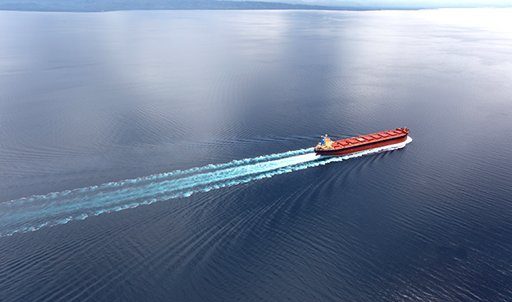Blue sky thinking on CII and the weather

Advances in predictive analytics and weather forecasting accuracy are key to shipping’s smart response to climate change, writes Eleni Polychronopoulou, CEO of METIS Cyberspace Technology.
Entry into force of shipping’s Carbon Intensity Indicator has only reinforced resistance to the International Maritime Organization mechanism devised to drive ship decarbonisation.
Shipping interests have highlighted apparent absurdities an instrument which rates ships by grams of CO2 emitted per cargo-carrying capacity and nautical mile, rather than real emissions. Logically, critics protest, the best CII rating would go to a ship slow steaming non-stop in ballast condition.
With charterers also up in arms over responsibilities described in a new BIMCO CII Operations Clause for Time Charter Parties, the wrangling over CII looks far from finished.
Nevertheless, with the rule in force, owners already need to evaluate their ships for CII to meet the IMO’s data collection system (DCS) reporting schedule for 2024. Furthermore, whether or not critics succeed in amending CII, IMO’s review is not scheduled till 2026, after a period when ships will have been required to reduce their CII against their 2019 baseline by 5% in 2023 and by 2% per year 2024-2026.
Practically-minded owners are responding to the situation at hand and focusing on how to optimize the operational performance of ships within the CII regime as it exists today.
Weather report
At a time when owners seeking to decarbonise are also confronted by any number of energy saving devices, alternative energy sources and carbon reduction solutions, the potential efficiency gains available from software-based solutions are understandably of great interest.
In fact, where shipping’s digital journey is being driven by the benefits of integrating different data sets, one of the most exciting opportunities to extract value from data relates to integrating real-time ship performance analytics with advanced weather forecasting capabilities. The resulting ‘weather-optimized routing’ can have a direct impact on CII performance.
METIS recently secured a formal agreement with DTN to include its actionable weather-based decision-making into METIS Augmented Routing Optimisation. Integrating the DTN Vessel Routing API offers a new demonstration of the way AI-based analytics deliver measurable gains to ship performance.
Rather than making recommendations based on simulations and ‘retro-optimised’ weather data, weather-optimized routing integrates a full evaluation of conditions from multiple sources to enable real time decision-making.
Integrating this information with vessel performance parameters, the solution is tasked with finding the smartest, safest, and most fuel-efficient route. With AI-based machine learning drawing on the API for continuously updated weather insights, the analytics also recalculate and adjust routing for constant optimization.
Just as METIS bases its analytics to optimize performance for machinery, hull fouling and damages, maintenance and repairs, fuel oil and crew skills on each and every vessel, Augmented Routing Optimisation can now adapt that performance to weather conditions – including for CII.
Where the business of shipping is concerned, a 2014 International Association of Maritime Universities report suggested that those using weather routing could save ‘more than 3% in fuel consumption’. By 2022, an industry case involving ‘retro-optimised’ data in combination with weather routing software was said to be offering gains equivalent to a 5-6% CII rating.
Today, METIS can disclose that a container ship deploying augmented routing optimisation with integrated weather routing optimisation can hope to improve its CII performance by as much as 10%.

The aviation sector is even more weather dependent. Why not tap into the established systems and processes that industry uses to secure improved transit performance and voyage efficiency. Silo thinking needs to be challenged.